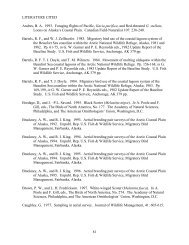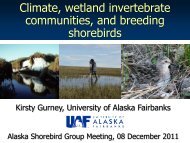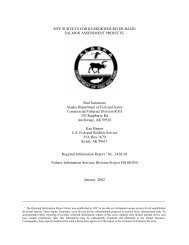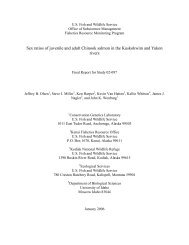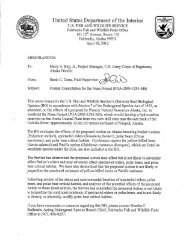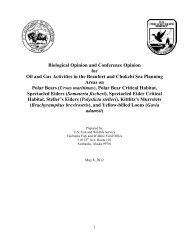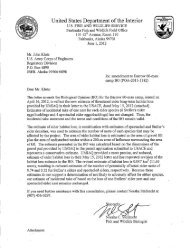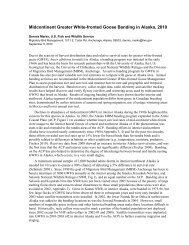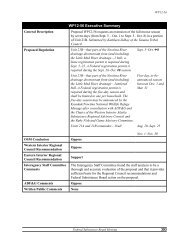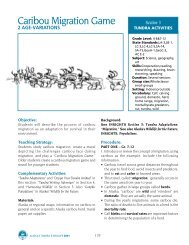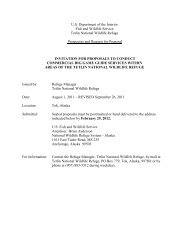Tetlin National Wildlife Refuge - USFWS Alaska Region - U.S. Fish ...
Tetlin National Wildlife Refuge - USFWS Alaska Region - U.S. Fish ...
Tetlin National Wildlife Refuge - USFWS Alaska Region - U.S. Fish ...
You also want an ePaper? Increase the reach of your titles
YUMPU automatically turns print PDFs into web optimized ePapers that Google loves.
<strong>Tetlin</strong> <strong>National</strong> <strong>Wildlife</strong> <strong>Refuge</strong><br />
Northern hawk owls (Surnia<br />
ulula) are year round residents<br />
of the <strong>Refuge</strong>.<br />
Lesser yellowlegs (Tringa flavipes)<br />
are the most abundant breeding<br />
shorebird on the <strong>Refuge</strong>.<br />
<strong>USFWS</strong><br />
<strong>Tetlin</strong> <strong>National</strong> <strong>Wildlife</strong> <strong>Refuge</strong> is a dynamic landscape of<br />
forests, wetlands, tundra, lakes, mountains and glacial rivers<br />
bounded by the snowy peaks of the <strong>Alaska</strong> Range. The<br />
upper Tanana River valley is a major migratory bird route.<br />
An estimated 143 bird species breed on TNWR, including<br />
species such as red-winged blackbird (Agelaius phoeniceus),<br />
sharp-tailed grouse (Tympanuchus phasianellus), and bluewinged<br />
teal (Anas discors) that are rare or absent elsewhere<br />
in the state. The <strong>Refuge</strong>, which was primarily created to<br />
support one of the highest densities of nesting waterfowl in<br />
<strong>Alaska</strong>, produces an estimated 35,000 to 65,000 ducklings each<br />
year. Thirty-two osprey (Pandion haliaetus), 64 bald eagle<br />
(Haliaeetus leucocephalus), and 13 peregrine falcon (Falco<br />
peregrinus anatum) pairs occupied nests on and adjacent<br />
to the refuge in 2003 [1]. Spectacular migrations of sandhill<br />
cranes (Grus canadensis), tundra (Cygnus columbianus)<br />
and trumpeter (Cygnus buccinator) swans occur each spring<br />
and fall. Several thousand swans stage on <strong>Tetlin</strong> NWR<br />
each fall and the <strong>Refuge</strong> supports an expanding population<br />
of trumpeter swans, a nationally significant species. Up to<br />
200,000 sandhill cranes, representing about one half of the<br />
world population, migrate through this corridor. Migrants<br />
begin arriving in the valley in April on their way to breeding<br />
grounds elsewhere in the state. The <strong>Refuge</strong>’s location within<br />
a major migration corridor contributes to the diversity of<br />
landbirds, many of which reach their northern range limit<br />
here. However, only about 25 year-round resident species are<br />
able to tolerate the extreme winter weather.<br />
<strong>USFWS</strong><br />
Contaminant Assessment<br />
7



